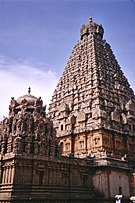| Part of a series on |
| History of Tamil Nadu |
|---|
 |
| Main |
| Sangam period |
| Medieval history |
| Categories |
Naming conventions of the Tamilakam in the Sangam literature have been one of the foremost concerns of Tamilology. The Surnames of the Caṅkam Age: Literary & Tribal, published in 1968 sought to offer one of the earliest treatments in this area.
Background
The Cankam literature is thematically divided into akam and puram. The poets worked under a convention of anonymity, not exposing the names of the heroes, heroines and friends in their poems, particularly in the former, in order to underline the universality of the feelings expressed in their poetry.
Tolkappiyam classifications
The Tolkāppiyam identifies ten categories of names. An̲n̲i Mirutalakumāri Tāmacu claims to have completely revealed the basis on which the Tamils adopted their names.
Wilden classifications
Eva Wildern identifies four types of names found in the Sangam literature: proper names, proper names connected with a name of a place or a dynasty, proper names with epithets and imagery names. This convention was codified in the Tolkāppiyam.
Tantaipeyar
This tradition involves firstly having the father's name followed by one's own name. This system was carried even into the medieval period.
Examples include cēramān, meaning "son of Chera" composed of cēra and makan, or vēlmān, meaning "son of Vel" composed of vēl and makan.
Fives parts of a name
The convention is remains that dynastic name is followed by the proper name. However, in the case of distinguished persons, there may be up to five parts to it.
Parimelazhagar (c. 13th century) codified the Classical-era conventions in his explanation of the correct name of Yanaikatchai Mantaran Cheral Irumporai as Kōccēramān Yāṇaikkaṭcēi Māntarañcēral Irumpoṛai. Kō meaning 'king' signifying his official title; Cēramān is the dynastic name; Yāṇaikkat 'Elephant-eyed' is a distinctive feature; Cēi is the iyatpeyar, or proper name; and Irumporai is an appellate.
Another example is Malayamān Cōzhiya Ēnati Tirukkaṇṇan. Malayamān is the dynastic name; Cōzhiya, "of the Chola Nadu; 'Ēnati" is the title of conferred by the King to the chief of the army in a ceremony known as Ēnatippatiyam; and Tirukkaṇṇan is his iyatpeyar, or proper name.
Dynastic name
Poets spoke to kings about the need for children for carrying on the family or dynastic name.
The dynastic or family name acts as a prefix and occurs before the actual name.
Titles
Some titles such as 'Kō' meaning 'king' were acquired, while others were conferred by the King. Three titles particularly renowned were known as Etti, Enati and Kaviti. Talaikkoli, Peraiyan and Marayan are a few of the other titles bestowed to eminent personalities in consideration to their talents in particular fields.
See also
- Tamil naming conventions, for Tamil naming conventions in modern times
References
- Chattopadhyaya, Brajadulal (2009). A Social History of Early India. Pearson Education India. p. 30. ISBN 9788131719589.
- Tāmacu 2003, p. 4.
- Wildern, Eva (2006). Literary Techniques in Old Tamil Caṅkam Poetry: The Kuruntokai. Otto Harrassowitz Verlag. p. 23. ISBN 9783447053358.
- Journal of Tamil Studies, Issues 49-50. International Institute of Tamil Studies. 1996. p. 82.
- Karandai Tamil Sangam Plates of Rajendrachola I, Volume 1. Archaeological Survey of India. 1984. p. 59.
- N. Subrahmanian, Tamil̲an̲pan̲, S. Jeyapragasam (1976). Homage to a Historian: A Festschrift. Dr. N. Subrahmanian 60th Birthday Celebration Committee. p. 218.
{{cite book}}: CS1 maint: multiple names: authors list (link) - E. J. Brill (1975). Literatur und Bühne: Abschnitt. Zvelebil, K. V. Tamil literature. p. 83.
- Ka. Ta Tirunāvukkaracu (1994). Chieftains of the Sangam Age. International Institute of Tamil Studies. pp. 21, 36.
- Sastri, Nilakanta (1972). Sangam Literature: Its Cults and Cultures. Swathi Publications. p. 98.
- G. Ramakrishna; N. Gayathri; Debiprasad Chattopadhyaya (1983). An encyclopaedia of South Indian culture. K.P. Bagchi. p. 78. ISBN 9780836411881.
- Vidyodaya Journal of Arts, Science, and Letters, Volume 4. Vidyodaya University of Ceylon. 1971. p. 37.
- Puratan - Volumes 2-3. Department of Archaeology and Museums, Madhya Pradesh. 1984. p. 50.
Bibliography
- Tāmacu, An̲n̲i Mirutalakumāri (2003). Social Heritage of the Tamils: Proceedings of the National Seminar on the Social Heritage of the Tamils, 18-12-91 to 20-12-91. International Institute of Tamil Studies.
- Wilden, Eva (2006). Literary Techniques in Old Tamil Caṅkam Poetry: The Kuruntokai. Otto Harrassowitz Verlag. ISBN 978-3-447-05335-8.
| Personal names and anthroponymy | |||||||||||||||||||||||||
|---|---|---|---|---|---|---|---|---|---|---|---|---|---|---|---|---|---|---|---|---|---|---|---|---|---|
| Personal name | |||||||||||||||||||||||||
| By sequence | |||||||||||||||||||||||||
| By trait | |||||||||||||||||||||||||
| By life situation | |||||||||||||||||||||||||
| Pseudonyms (list) | |||||||||||||||||||||||||
| By culture Surnames by country |
| ||||||||||||||||||||||||
| By religion | |||||||||||||||||||||||||
| Manners of address List of authority / honour |
| ||||||||||||||||||||||||
| Related traditions | |||||||||||||||||||||||||
| Related | |||||||||||||||||||||||||